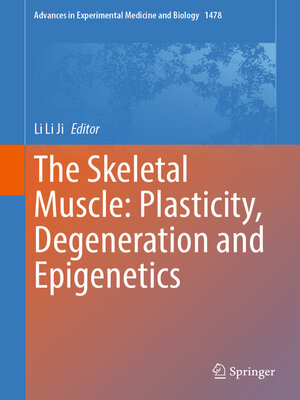The Skeletal Muscle
ebook ∣ Plasticity, Degeneration and Epigenetics · Advances in Experimental Medicine and Biology
By Li Li Ji

Sign up to save your library
With an OverDrive account, you can save your favorite libraries for at-a-glance information about availability. Find out more about OverDrive accounts.
Find this title in Libby, the library reading app by OverDrive.



Search for a digital library with this title
Title found at these libraries:
| Library Name | Distance |
|---|---|
| Loading... |
Skeletal muscle is not an organ merely for locomotion with simple anatomical and metabolic features as has been viewed for a long time. The understanding that physical activity plays a vital role in health promotion and disease prevention under the slogan of “exercise is medicine” has dramatically increased the enthusiasm and demand for knowledge about the skeletal muscle. This book, "The Skeletal Muscle: Plasticity, Degeneration and Epigenetics", is a follow up of another book authored by the Editor, which provides the morphological, physiological, biochemical and molecular biological foundations for organ’s response and adaptation to functional demand, and for the mechanisms and prevention for the organ’s pathogenesis and degeneration. Research in the past several decades has demonstrated that skeletal muscle has a tremendous ability to undergo internal changes in response to functional, environmental, nutritional and genetic challenges, through various neural, endocrine and autocrine pathways for signal transduction. Although the contractile proteins show a relatively slow turnover, many organelles and constituents in the myocyte exhibit considerable remodeling throughout the muscle’s life cycle. In this regard, mitochondrion plays a central role in the crosstalk of signaling not only in its own turnover and quality control, but also in exerting important influences on other vital cellular functions. On the opposite side, skeletal muscle is highly vulnerable to disuse and misuse that can cause injury, inflammation, degeneration and atrophy. The various chapters in this book, contributed by the experts in the field, will introduce and review the most concurrent knowledge to address important issues related to muscle plasticity, pathogenesis, disease and aging. Potential strategies to prevent and ameliorate the above problems in a whole-body perspective will be highlighted to provide the readers with the inspiration to learn and work with this important and intriguing organ.







